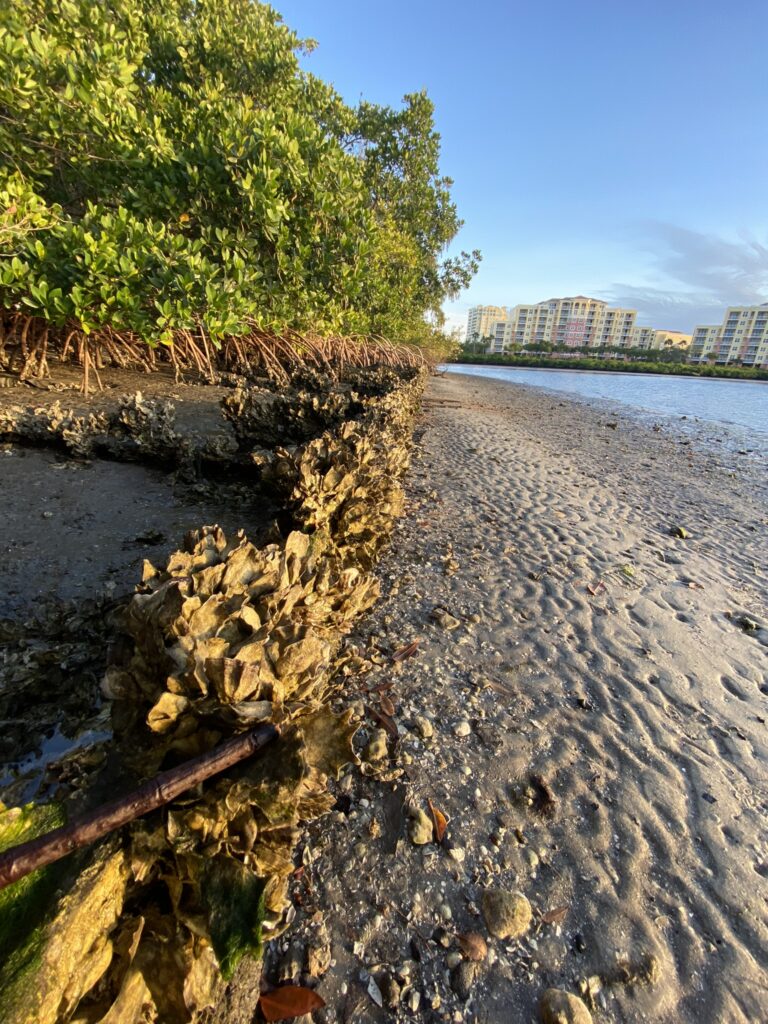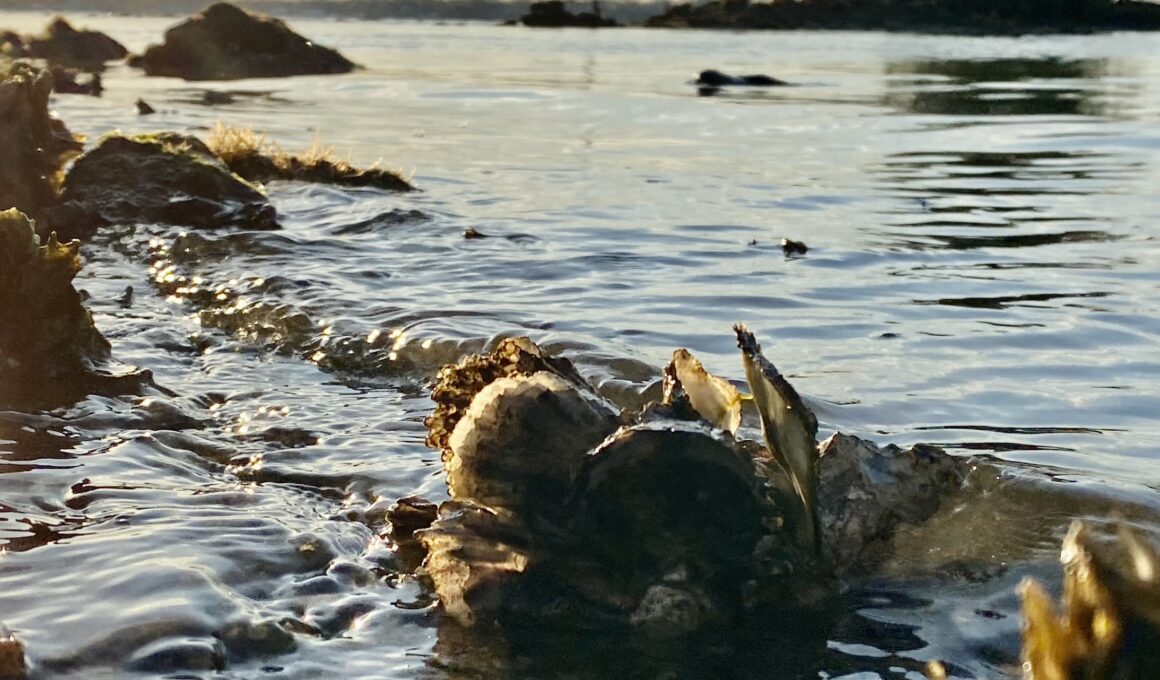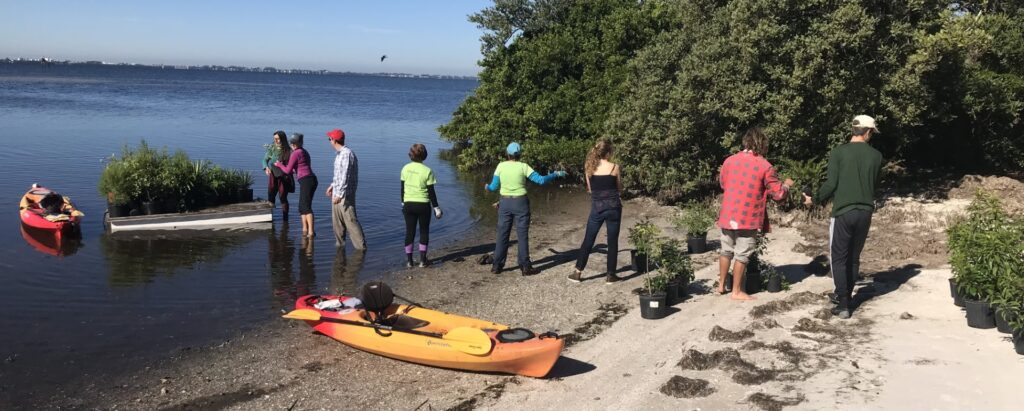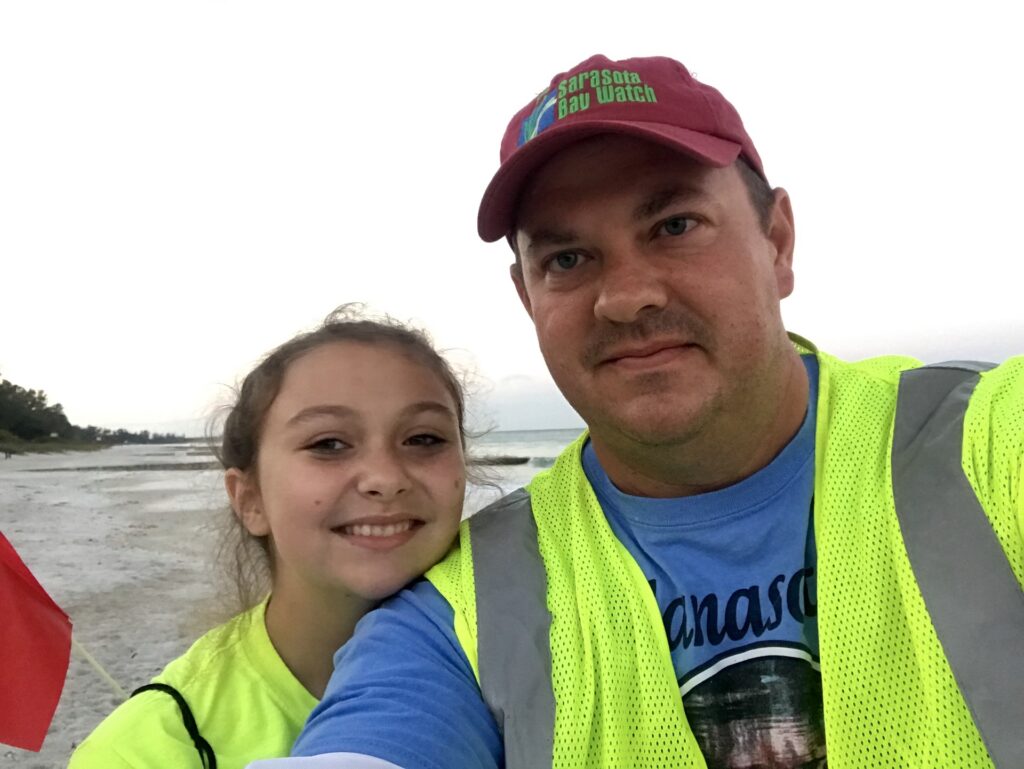
The Oyster River doesn’t show up on current maps, but Damon Moore hopes that a waterway once so full of the sought-after shellfish that its reputation rivaled Apalachicola with the connoisseurs of its time can be at least partially restored. Moore isn’t focused on food, though, he wants to improve water quality and habitat values in what is now known as the Manatee River — and beyond.
A restoration ecologist who directed restoration at Robinson and Perico preserves (among many others) as division manager for ecological and marine resources at Manatee County, Moore formed Oyster River Ecology (ORE) earlier this year as a results-oriented not-for-profit to focus on restorations that benefit Tampa and Sarasota bays.
“There are so many local projects that could be done, and so many grant funding opportunities not being tapped because our local community of habitat restoration professionals is already working beyond 100% capacity,” he said. “I saw a need for a project-focused organization to be a spark plug for moving more large-scale restoration projects forward, made of people who refuse to quit when they hit any kind of hiccup.”
That grant-writing experience dates back to 2009 when Moore and a friend came up with “a hare-brained scheme” to restore Mariposa Key, a six-acre island accessible only by boat. From the water, it looked like an unspoiled paradise but inland, it was solid Brazilian pepper. They learned to write grants and were awarded funding from the Florida Native Plant Society, U.S. Fish and Wildlife Service and the Tampa Bay Estuary Program to remove the invasives and plant natives.
ORE’s first projects also will be land-based. Even before its website went live, Moore hit the ground running. He’s already working with the Conservation Foundation of Southwest Florida and Manatee Audubon. “I’ve done volunteer work days out at (Audubon’s) Felts Preserve and their volunteers are putting in a huge amount of effort, but they need someone with a professional background to develop a restoration plan that works for the site and help writing a grant or two to get them to the next step.”
On the drawing board: Camp Honi Hanta; the Girl Scout camp on the Braden River where his daughter has been active for years. “It’s a beautiful piece of old Florida but it is losing ecological value because invasive exotic plants are taking over certain areas of high-quality habitat. Restoring the natural features of this incredible property, and others like it, are worth the effort, and ORE can provide the technical guidance and logistical support to get the work done, preserving the site’s natural beauty and ecological integrity for generations to come.”
Going forward, Moore expects to work with private landowners, corporations and non-profits as well. “We’ll run GIS analysis to identify properties with the highest potential for ecological restoration and then reach out to their owners to build partnerships that implement ecological enhancement projects to the extent it aligns with their goals for the property.”
ORE also expects to involve neighborhood groups and homeowners associations. “Many neighborhoods are interested in improving the ecological values of lands they control but don’t know where to start,” he said. “Often, those improvements can be funded through reallocating funds currently spent on maintenance activities like mowing.”
Community involvement also will be a key focal point for ORE. “Most people who know me have heard the story about how I got into this field in the first place. I was part of a youth volunteer group planting mangroves at Leffis Key when I was 12 years old,” he said. “It had a big impact on my thinking, and It’s really important to me to get people involved with restoration projects and then they’ll know first-hand why water quality is so important – and that everyone can have a positive impact.”
Why oysters?
But oysters will always have a special place for an organization named after them, Moore said. “It kind of started with a Bay Soundings story on oysters and just how abundant they were in Tampa Bay, so I started digging into historical resources, including the maps of dredge leases in the Manatee River. There were so many oysters in the river that it was basically free food, then later free money, just to pick them up.”
While unregulated harvesting destroyed the historical commercial fishery, oysters growing today are creating important habitat and helping to improve water quality. “I know oysters aren’t going to solve the water quality issues in Tampa Bay, but they’re important tools and they work for free.”
Using the rip-rap near bridges that are covered in oysters as an inspiration, Moore led a team of Manatee County volunteers who placed about an acre of riprap at Robinson Preserve. “It was all volunteer work with multiple events – there were a lot of really sweaty people and sore muscles – but it’s been eight or nine years now and those oysters have been cleaning water every single day since and they’re going to keep doing it. We haven’t had to pay them, we haven’t had to maintain them – they’re just doing their thing and it’s awesome.”
He took those lessons and improved upon them when the Robinson Preserve expansion was designed literally from scratch, giving them the opportunity to place oyster reef habitat using trucks, not volunteers. “We got weeks or months of work done in a half-day because we were working on dry land before we opened the channel and let the water in the new wetlands area.”
Going forward, Moore expects ORE to grow in capacity and work with multiple local partners on major habitat improvement projects through the Suncoast. A big part will be oyster reef restoration projects in the Manatee River and elsewhere in the region.
“There are incredible opportunities to restore oyster habitats and the ecosystem services they provide in the Tampa Bay and Sarasota Bay area. We can do this as a community! This is already evident by the multiple local organizations and thousands of dedicated volunteers that have proven on past projects and amazing grassroots efforts. ORE intends to be the spark plug to increase oyster restoration in our area to a landscape scale so that our future oyster populations, water quality, and habitat values of our bays might be comparable to that of days long gone by.”



